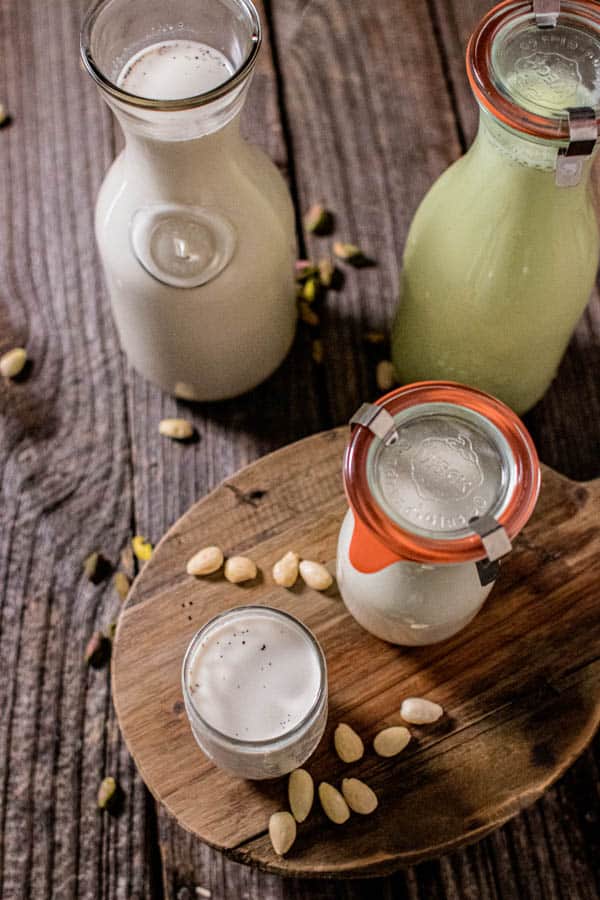
CA GROWN Blog
Discover. Learn. Connect.
How to Make Almond Milk
Meet Them Here
Read Bios »How to Make Almond Milk
Have you ever wondered how to make almond milk at home? Our recipe is simple, free of refined sugars, and it yields the creamiest, most luxurious almond milk you’ve ever tasted!

California is 1 of only 5 places in the world with the climate needed to successfully grow almonds (Cool, wet winters and hot dry summers), pretty cool huh?! The almonds grown here in California account for 100% of the US almond supply and 80% of the worldwide supply, which means we know a thing or two about cooking with almonds.
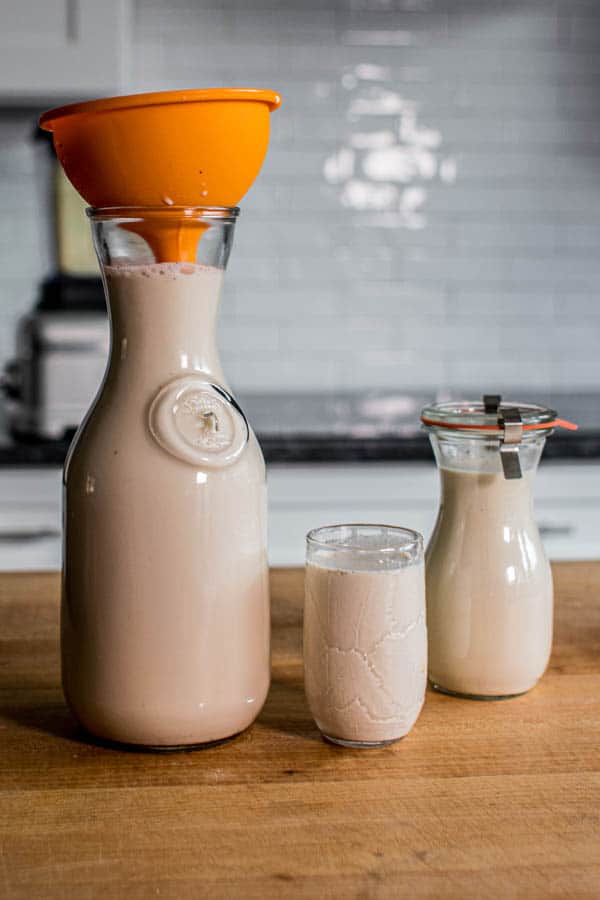
What equipment is needed to make almond milk?
The first thing to know about how to make any nut milk is that there really isn’t much you need to get started. But, there are a few pieces of kitchen equipment that you will need to have ready ahead of time so that your nut milk making sessions flow seamlessly from one step to the next.
- A high powered blender
- Nut milk straining bag or a mesh sieve lined with 2-3 layers of cheesecloth.

Here is how to make almond milk or almond creamer in just a few simple steps.
There are a million recipes on the internet for almond milk, but this one is different than most. Lots of recipes call for refined sugars as a sweetener or dates, but we prefer to use the natural sweetness of California prunes to sweeten ours.

Prunes are sort of a unicorn of an ingredient if you ask us. They pair very well in recipes that utilize rich and complex flavor notes – like espresso, chocolate and even olives! But, they lend a subtle sweetness without overwhelming the flavor in very simple flavor profiles like this almond milk too.

Soak the almonds.
You can use blanched almonds or raw almonds here, it doesn’t really matter. But, it is a good practice to use filtered water when soaking nuts.
To retain as many nutrients as possible in the almonds it is preferred to soak almonds overnight in cool water. However, in a pinch, you can soak them for a couple of hours by pouring boiling water over the almonds until they are covered by a few inches of water then allowing them to soak.
Once the soak time is over drain and rinse the almonds thoroughly.

Add the prepared ingredients into the blender.
Layer the almonds, drained, chopped prunes, and 4 cups of filtered water into the carafe of a blender.

Blend, blend, blend!
Start your blender and slowly work your way to medium-high speed. Set a timer for 2 minutes and let your blender do its thing!

Time to strain!
Position a nut milk straining bag or a mesh sieve lined with 2-3 layers of cheesecloth over a large bowl and pour the almond milk mixture in.
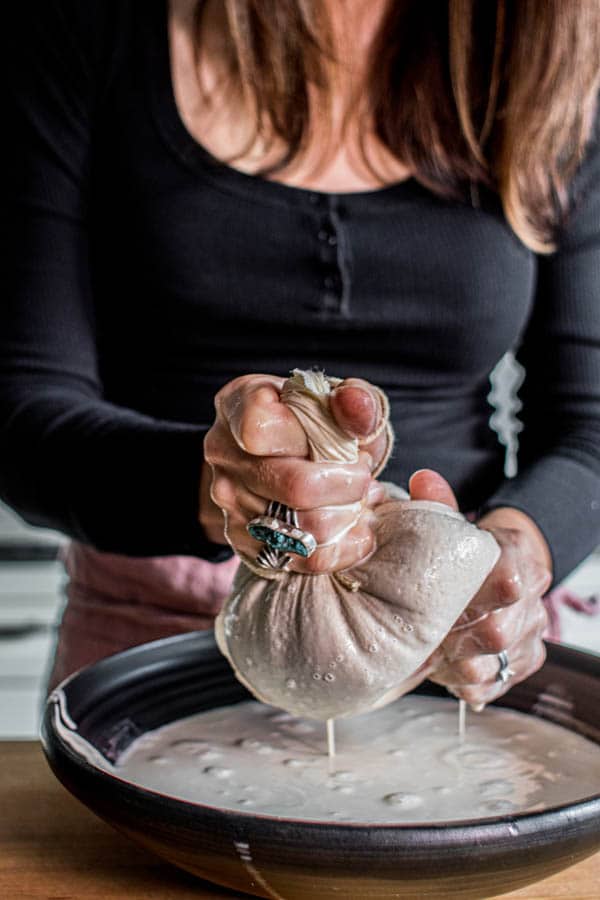
The more you squeeze…
…the more almond cream you will be left with! Honestly, this part of the process takes up most of the prep time and probably most of some people’s patience. Also, if I am being honest here, this part of the process can get a bit messy, but it is super worth it!

You just made almond cream!
AKA: Almond milk creamer! AKA: Almond Barista Milk! See how thick and luscious this is?! That texture makes it perfect for adding to coffee or espresso drinks. So if creamer is your thing, set 1 cup of it aside for that purpose and continue with the recipe.
If you would like to use this almond milk to make hot, frothed drinks like lattes or cappuccinos, stop at this step also. Almond cream froths beautifully with the help of a frothing wand or espresso machine, resulting in thick, luxuriously creamy espresso drinks.
It is also important to note that we found in recipe testing that the almond milk made with blanched almonds (like pictured in this post) created a thicker froth and didn’t separate as quickly in espresso drinks as the almond milk made with raw almonds.

Thin the almond cream.
Add the remaining 2 cups of filtered water to the almond cream and whisk to combine.

Add some flavor, if you want!
Now is when it gets really good, time to flavor up your almond milk!!!
Want it a bit sweeter? Add some honey! Like vanilla flavored almond milk? Add vanilla beans like we did or use vanilla extract or vanilla bean paste if you would like.
Th sky is the limit when it comes to flavoring almond milk, so follow your tastebuds desires and flavor accordingly!

How should almond milk be stored and how long does it keep?
Transfer the milk, into a jar with tightly fitted lid or a covered bottle and refrigerate. This almond milk will keep for up to 4-5 days, although it is best when fresh. Separation during storage is natural, shake well to reincorporate before serving.
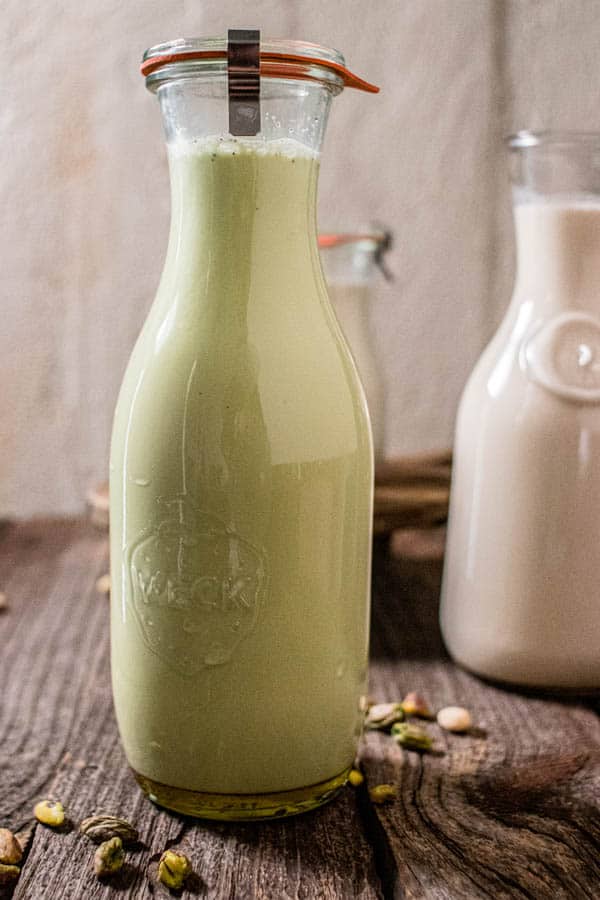
Can other nuts be made into nut milk?
YES they sure can! The almonds in this recipe can be replaced with an equal amount of other nuts like pistachio as pictured here, pecans, walnuts, or even hazelnuts! So feel free to make this recipe your own and then let us know what nut milk blends you are making by leaving us a comment below!
Now that you know how to make almond milk, here are a few of our favorite ways to use it!

Red Wine Hot Chocolate
Sub out the whole milk in this boozy hot chocolate recipe from the Wine Institute with this homemade almond milk. It’s just as creamy and decadent!
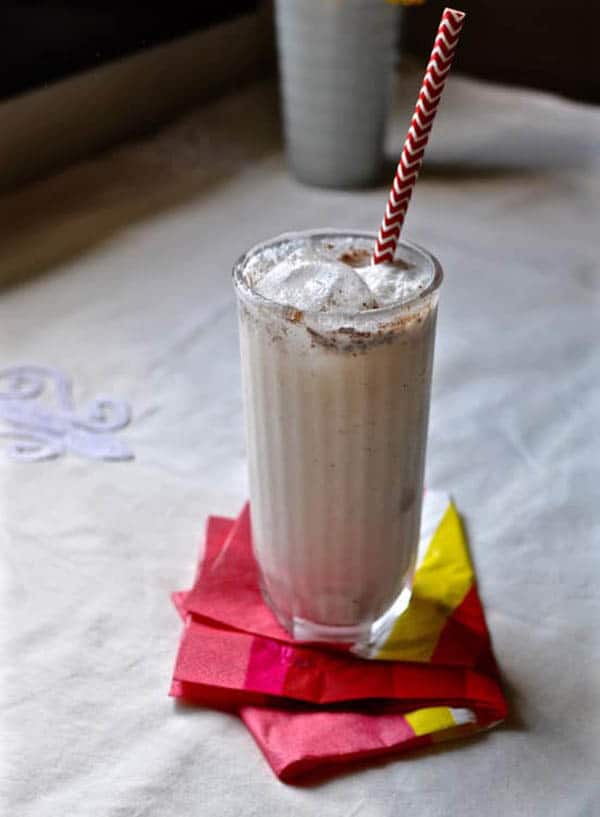
Easy Almond-White Chocolate Horchata
Put your homemade almond milk to good use with this delicious Almond-White Chocolate Horchata recipe from Kate of Hola! Jalapeno.
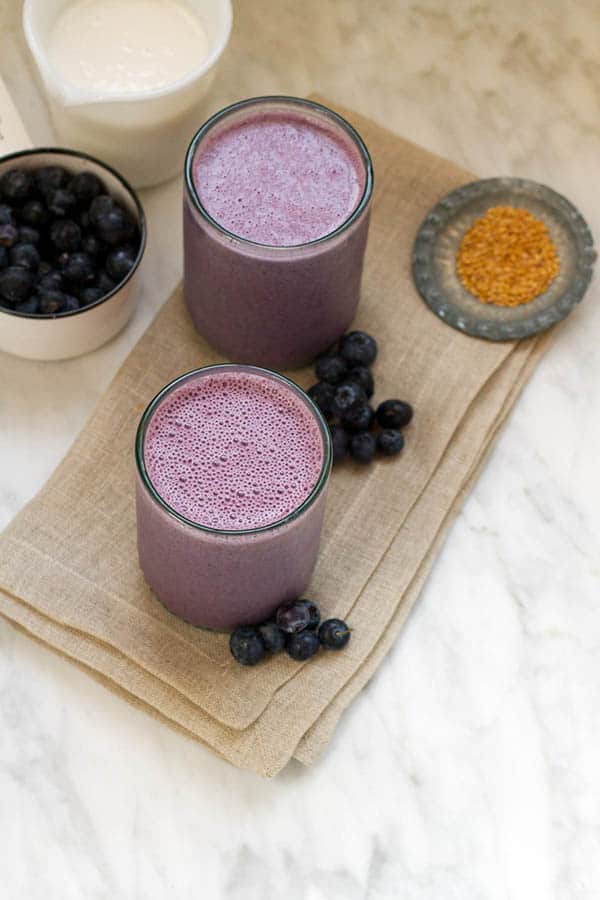
Blueberry, Banana Almond Butter Smoothie
We love using homemade almond milk in smoothies like this one from Salt & Wind!
Share your creation with us by snapping a pic and tagging us on social using #CAGROWN.
Craving more CA Grown goodness? Follow us on Pinterest for fresh and fabulous recipe inspo!
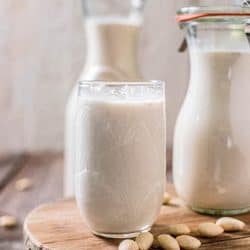
Almond Milk and Creamer recipe
Equipment
- high powdered blender
- nut milk straining bag or a sieve lined with 2-3 layers of cheesecloth
Ingredients
- 2 cups (10 ounces) raw or blanched almonds soak overnight in cool water or 1-2 hours in very hot water
- 4-5 prunes, roughly chopped soaked in very hot water for 15 minutes, drained
- 6 cups filtered water divided
- 1 teaspoon optional vanilla extract, vanilla bean paste or beans from 1 vanilla bean pod.
- 2 tablespoons optional honey, if you like sweeter almond milk.
Instructions
- Prepare the nut milk straining bag or a sieve lined with 2-3 layers of cheesecloth over a large bowl. Set aside.
- Drain and rinse the soaked almonds thouroughly.
- Add the almonds, soaked prunes, and 4 cups of filtered water to the carafe of a blender. (If your blender is small you may need to do this in two batches.) process for 2 minutes, until smooth and creamy.
- Pour the mixture into the nut mulk bag or the lined sieve, and let the almond milk begin to drain into the bowl. If using a nut milk bag, gently squeeze the bag to extract as much of the liquid as possible. If using a sieve, allow to drain as much as possible, then use a wooden spoon or rubber spatula to press out as much milk as you can.**The liquid you have now is essentially almond milk coffee creamer, see recipe notes for more coffee creamer details.**
- Add the remaining 2 cups of filtered water to the almond milk and whisk to incorporate. If using any additional sweetner or flavorings add now.
- Store this almond milk covered in the refrigerator for 5-7 days.
Video
Notes
To make almond milk coffee creamer
The super thick and creamy almond milk that is left after straining out the almond solids is almond milk creamer. You can sweeten or flavor it as desired and store covered in the refrigerator for up to 5-7 days. Use as you would your normal plant based coffee creamer.Nutrition
Click here to view the Google Web Story for this post.
Frequently Asked Questions
Natural almonds are good for up to two years. You can extend their freshness by storing them in the fridge or freezer.
The suggested serving of CA Prunes is 4-5 prunes, which contains under 100 calories, 3g fiber, 280mg potassium, 35mcg vitamin K
